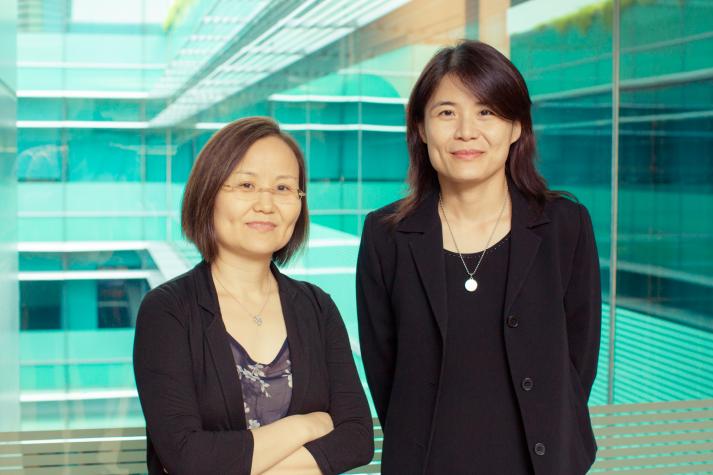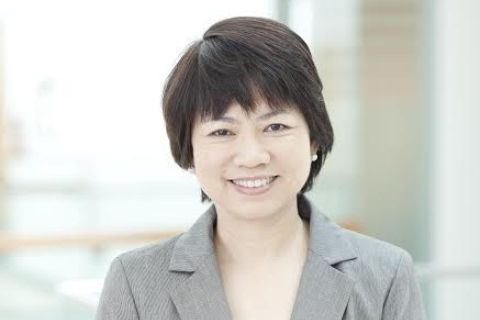
SMU Professors Huang Fali and Chang Pao Li study how education systems and international trade are interconnected. Instead of pursuing the same ideals, they say that further differentiating education systems may lead to skill complementarity and make all countries better off.

Photo Credit: Darren Yau
By Dora Yip
SMU Office of Research (13 Dec 2013) – Education systems evolve over time. How a country shapes its education policies, and the resulting talent that emerges, are inextricably linked to the role it plays in the global economy.
This interaction between education systems and international trade fascinates Associate Professors Huang Fali and Chang Pao Li from the Singapore Management University (SMU) School of Economics. “A country’s increasing integration into the world trade system is one potential important factor that drives its long-run changes in education systems. Such influence however has received little attention in the literature,” says Professor Chang.
In their first joint research project, entitled “Trade and Divergence in Education Systems”, Professors Huang and Chang focused on the interactions between education, workforce diversity and trade. The United States (US), for example, is famous for its extremely decentralised education system and diverse talent distribution. Given this, it is not surprising that the US has a comparative advantage in creative industries such as software, movies and frontier technology. In sharp contrast, Japan, with its very centralised education system, produces a highly homogeneous and well-trained workforce that has been successful in sophisticated manufacturing sectors such as automobiles and machinery.
“Many people may not realise that such a contrast in education systems and talent distributions across countries is not exogenous or given. Instead, the very same process of participation in trade may reinforce the existing contrast in education systems,” says Professor Huang. “Our theory further indicates that the observed difference in education and talent distribution may still fall short of the optimal level. In other words, more specialisation and trade by further differentiating education systems may make all countries better off.”
Constructing a new measure from scratch
Riding on that theory, the professors focused on characterising the degree of centralisation or homogenisation in a country’s education system and its effect on its talent distribution. “In our research, we found it very difficult to characterise and measure the education styles across countries, because education system is a complex concept with multi-dimensional characteristics. And the data on the actual implementation and polices were not comprehensive across countries or over years,” says Professor Chang.
After pouring through the literature, they identified that a critical dimension of education systems – the degree of curriculum centralisation – had yet to be subject to empirical study. Hence, they constructed this measure from scratch based on raw data from the Trends in International Mathematics and Science Study (TIMSS).
Doing so, they found a robust link between the degree of curriculum centralisation and a country’s talent distribution. They found that when a homogenous curriculum was adopted, it resulted in both talent homogeneity as well as increased mean ability. In this type of education system, as is seen in Japan and some East Asian countries, a centralised curriculum council typically sets and enforces a uniform curriculum via the selection of textbooks, instructional guides to teachers, periodic curriculum evaluation and national standardised tests.
In contrast, in a decentralised education system like in the US, schools do not need to follow a standardised set of curricula or performance targets, resulting in more variation in student performance. Without the necessary discipline however, less-talented students may fail to acquire the basic set of skills.
“We found that, relatively speaking, the Japanese style of education system promotes homogeneity in the distribution of skills, while the US style leads to more diversity. Based on the TIMSS dataset, we found some empirical support for the above relationship in the sample of OECD countries. A more centralised curriculum structure is indeed associated with lower skill diversity and a higher mean ability, and the relationship is statistically significant and consistent across different years of study,” says Professor Huang.
Human capital in a global economy
Interactions between education and trade can be seen in many national reviews of education policies across the world. In the US for example, the National Commission on Excellence in Education (1983) claimed in an influential report that America’s manufacturing sector was at risk of being taken over by Japan and Germany. The report recommended that if America wanted to keep and improve on the slim competitive edge it still retained in world markets, it must dedicate itself to the reform of its educational system.
Professors Chang and Huang’s main research finding is that each country’s optimal education system is interdependent. Since not every country can excel in each sector, it is more productive to identify one’s comparative advantage than to focus on competitive edge alone.
“In an increasingly competitive global environment, Singapore should also try to identify its position and comparative advantage in the global economy. And such strategic planning should be formulated together with education policies in light of our theory. Our conjecture is that Singapore has a very good chance of becoming the mini US in Asia and its education system can be formulated in a way to induce the creation of highly creative talent, including entrepreneurs. However, such a system also implies that the education system has to be more lenient and encourage pupils to explore their individual talent and potential,” Professor Huang says.
Not surprisingly, their research has generated interest from both education experts as well as public policy makers. “While our idea is new and has yet to gain traction, the empirical evidence has found a clear relationship between education and talent distribution. It has become conceptually possible to establish a link between education and comparative advantage. The results provide a concrete dimension of education system for policy makers to target as they consider fine-tuning the workforce composition,” Professor Chang says.
Their research showed that policy makers should not focus solely on the micro perspective of school performance, but also the global strategic position of a country. “There is no universally optimal education style; this insight is similar to the common sense that we need a diverse set of talent at the individual level. We should not blindly mimic the education style of particular countries,” she adds.
For their future research, the professors plan to study other aspects of education systems. For example, the education system one is exposed to may affect one’s inclination to become either an entrepreneur (talent in creating new business entities) or an intrapreneur (talent in creating new production processes within existing business entities). It may also influence the landscape of firms, including their governance, size, sectoral allocation and position in the global value chain.
So far, their research has focused on static comparative advantage, but in the long run, education systems could affect a country’s growth trajectory in a dynamic manner, making leap-frogging possible. “We hope that incorporating such dynamic concerns would allow us to offer clearer guidance and advice on education policy making for the long run,” Professor Huang says.
See More News
Want to see more of SMU Research?
Sign up for Research@SMU e-newslettter to know more about our research and research-related events!
If you would like to remove yourself from all our mailing list, please visit https://eservices.smu.edu.sg/internet/DNC/Default.aspx

